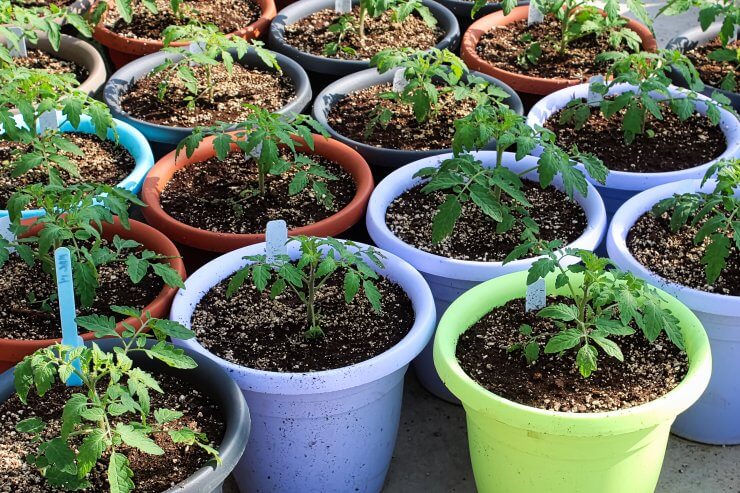
Like many things in life, success in gardening is all about timing. Plant your tomatoes in October and it’s unlikely you’ll have much to show for your work. When it comes to starting seeds outdoors, timing is absolutely critical. Start your garden too early and a hard frost could ruin your seeds before they get started. Wait too long and your plants won’t have time to mature before the weather gets too inhospitable.
That timing, of course, depends on what you’re planting and where you live. Gardeners in Florida have a much longer growing season than those of us in New England. That shorter season is one reason many gardeners in northern regions start seeds indoors in containers, then transplant them outdoors when the weather warms up.
There are some plants, however, that you can sow directly into the soil, no matter where you live. Radishes grow so quickly that you can plant them outdoors in any region and have plenty of time to harvest them before the weather gets too hot or cold.
But there’s another option: starting seeds outdoors in containers. What are the advantages of that approach? The disadvantages?
Discover 7 top tips for growing, harvesting, and enjoying tomatoes from your home garden—when you access the FREE guide The Best Way to Grow Tomatoes, right now!
Should you take the jump to starting seeds outdoors? Here’s why you may (or may not) want to
For most gardeners, starting seeds indoors is a way to get a jump on the growing season. Indoor environments keep seeds and seedlings warm and protected until they’re ready to move outdoors and into an in-ground or raised bed garden. Starting seeds outdoors is usually reserved for plants that are more cold-tolerant or don’t appreciate getting moved around.
But why would anyone want to mix the two and start seeds in outdoor containers?
The pros of starting seeds outdoors in containers
- Natural light. Many seedlings won’t get enough sunlight in an indoor location. You can invest in grow lights or put them underneath a fluorescent light, but keeping them outdoors ensures they get plenty of natural light.
- No hardening off. For seedlings grown indoors, many need to be hardened off, or gradually adjusted to the outdoor environment. When you’re starting seeds outdoors, you can skip that step.
- It’s quick. Once you plant your seeds, it’s just a matter of letting mother nature do the work, while you stick to basics like ensuring your seedlings have enough water.
- More in tune with nature. Your seeds and seedlings can work with the natural rhythms of day and night, of wind and rain, and warm and cool.
- Some plants don’t like to be moved. Root vegetables like carrots, turnips, radishes, and so on don’t transplant well. Nor do squash and cucumbers.
The cons of starting seeds outdoors in containers
- Unexpected freezes. While some seeds and seedlings do just fine with a cold snap, many of them will succumb to a sudden and deep drop in temperature. That’s not necessarily a problem if you can move your plants indoors, but it is worth paying attention to.
- Less control over the environment. In addition to a hard freeze, too much rain, not enough light, or heavy winds could destroy seeds and young plants.
- Critters. Although container gardens are less susceptible to pests, there’s no guarantee that a rabbit or skunk or that kid down the street won’t dig up your seedlings.
- Weeds. Again, this is not usually a problem with container gardens, but it’s not unheard of, either. And a few weeds early on could rob your seedlings of the nutrition they need to grow.
- Seeds can grow disappointment. Gardening is always full of ups and downs, but when your seeds don’t germinate at all, it’s disappointing. That’s true whether you start your seeds indoors or out.
The great thing about gardening is that it’s always a learning experience, and there’s more than one right way to do things. Certainly, a tasty harvest is the goal, but don’t forget that the act of gardening comes with benefits of its own.
Do you like to start your garden with seeds or do you prefer seedlings? Share your story in the comment section below.
Discover 7 top tips for growing, harvesting, and enjoying tomatoes from your home garden—when you access the FREE guide The Best Way to Grow Tomatoes, right now!





We have been using pots for seeds and cuttings for years. In Florida we have storms and some cold weather a couple times a year. The biggest mistake we have made is planting in black containers in the heat of the Florida sun. We found spray painting the pots a lighter color woks better to keep the soil from drying out and the plants or seeds from burning up.
Great idea, Paul. That might work well in my KC, KS garden, too, come July through August.